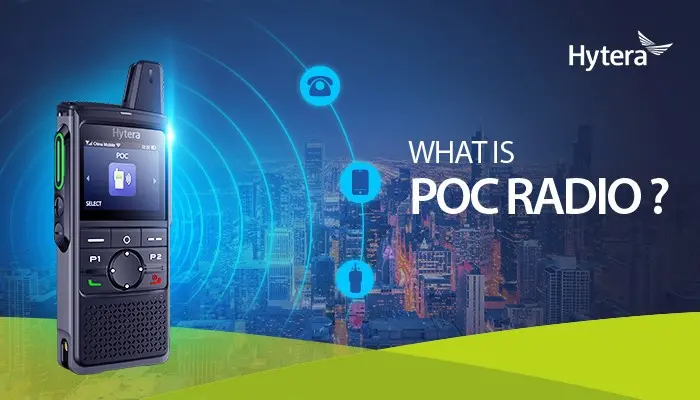The coverage of public network signals is ubiquitous, and the application of smart phones greatly facilitates people’s work and life. For commercial users, if two-way radios could have the advantages of mobile phones, realize smooth network everywhere and have various applications, it will provide an extremely convenient and low-cost way of communication.

The Push-to-Talk Over Cellular (PoC) is a mobile communication system for command and dispatch based on the operator's mobile communication network. Because of its convenient use and no distance restrictions, it is very popular among all walks of users. Its main function is to provide work management and command and dispatch services for enterprises, institutions and groups, mainly for group users, such as public security, firefighting, hospitals, urban management, government agencies, transportation, airport aviation, large-scale gatherings, etc. Due to its wide coverage and low cost, it can be rapidly deployed in batches to meet the needs of these groups to improve emergency response speed and work efficiency.
PoC solutions first appeared on the market over a decade ago following the release of the first set of specifications drawn up by the Open Mobile Alliance (OMA) in June 2005. PoC had some take up in North America using 2G and later 3G services, but made little headway in Europe. All that has changed in the last two to three years thanks to the roll out of commercial 4G LTE networks. 4G delivers the data speeds and low latency to rival PMR systems, which has helped to transform PoC into a seriously attractive proposition for many (although by no means all) organisations, particular those for whom communications are not necessarily business or mission critical.
PoC platform providers have emerged in North America and Europe offering better Quality of Service (QoS), reliability, availability, security and support for third party applications, than those available to normal mobile phone consumer subscribers. What these PoC platforms offer is traditional PMR type services, but over commercial 4G LTE cellular networks.
The great benefit of PoC is that it provides fast PTT services and the one-to-many group calling services found on PMR system, but not on normal mobile phone networks. Unlike PMR networks where channel capacity is finite, PoC platforms allow any number of virtual channels and as many call groups as you want to be created, including the ability to create dynamic call groups. Dispatcher services can be enabled, including real-time GPS location, tracking and monitoring services, along with other PMR type services such as late entry to group calls and remote stun or kill of devices.
Other typical PMR applications such as Lone Worker monitoring and alarms can also be provided, along with full call recording, logging and playback. It also enables POC devices to take on some of the traditional PDA roles such as workflow management, job ticketing, scanning items and proof of delivery services. Some PoC platforms also enable you to integrate PoC services with existing PMR systems using gateways to provide a unified PMR/cellular network. This allows you to extend the range of your PMR network and enable those out of range of the PMR network or who do not have a PMR terminal to communicate with those that do using a PTT cellular device.
However, PoC cannot completely replace the traditional private network system. In extreme cases, the public network communication facilities are often seriously damaged. Therefore, the private network trunking system of the relevant command departments still plays an irreplaceable role in emergency rescue or emergency missions.
Hytera will launch the PoC radio series and solutions at the 2019 Mobile World Congress in Barcelona. It can realize multimedia services such as voice, text, picture and video through 2G/3G/4G and WiFi networks, as well as hierarchical system management and flexible dispatching.

